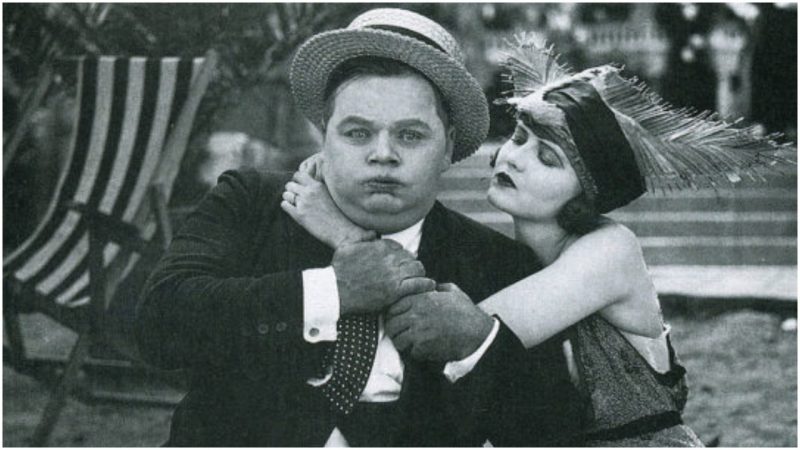It seems like there is one unwritten rule in show business: those who raise the stars to their glory are often overshadowed by their shine.
Although Roscoe Arbuckle managed to earn his fame during the silent film era, his name is rarely mentioned today, unlike those of his former students. However, Roscoe Arbuckle made a huge impact on the early Hollywood scene and for this, his name should be remembered. Roscoe Conkling Arbuckle was born on March 24, 1887, in Smith Center, Kansas. He was one of the nine children of Mary E. “Mollie” Gordon and William Goodrich Arbuckle. Since the beginning of his life, things were tough for Roscoe. He was a big baby, weighing 13 lb (5.9 kg) at birth, and as both his mother and father were slim, his father came to believe that his mother had had an affair. Because of this, William Goodrich Arbuckle despised his son for the rest of his life and gave him the name of a notorious politician and Republican senator from New York called Roscoe Conkling.
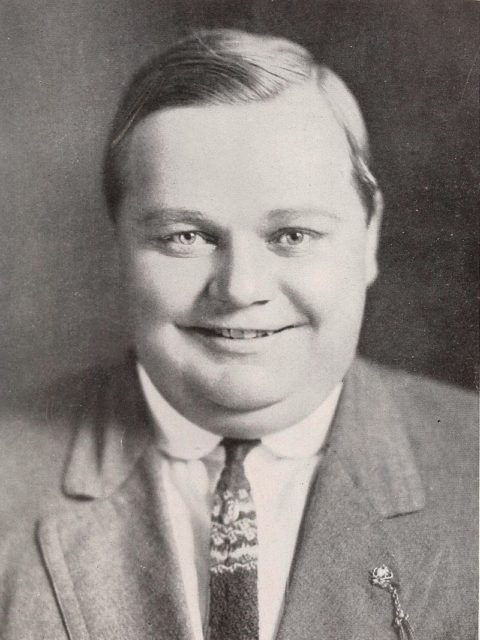
After Roscoe’s mother had died when he was 12 from complications she had suffered from ever since his birth, his unloving father refused to give him any further support and Roscoe was forced to do odd jobs in a hotel. Luckily, this job offered an attractive opportunity to him. Since early childhood, Roscoe was known for his beautiful voice, and he very much enjoyed singing.
One day, while he was singing and doing his job at the hotel, one of the customers who happened to be a professional singer, overheard him and invited him to an amateur talent show. The contestants were being judged by the audience that clapped and cheered the good acts and used a shepherd’s crook to remove the bad ones. Arbuckle prepared an act in which he sang, danced, and clowned around, but the audience was not very impressed. When he saw the crook coming his way, he panicked and rolled into the orchestra pit to avoid it. When the audience saw this “act”, they immediately went wild, and Arbuckle won the competition. This is how Roscoe’s vaudeville theater career began.
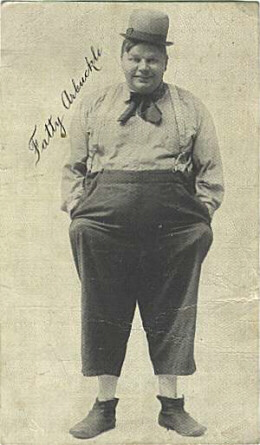
Rosco started doing vaudeville shows around the country for several years, touring China and Japan with the Morosco Burbank Stock vaudeville company, and later returned to the United States in 1909, where he then began his movie career. His first appearance on the screen was in the Selig Polyscope Company’s movie “Ben’s Kid”. After that, he appeared in a few other Selig one-reelers, until 1913, when he moved to Universal Pictures and became a star in producer-director Mack Sennett’s “Keystone Cops“ comedies. Slowly, Roscoe worked his way up to the top circles of Hollywood and became a respected lead player and director.
Although Arbuckle was aware that his physical appearance was part of his comedic effect, he never allowed himself to be identified with it, not wanting to use his weight for cheap laughs, he refused taking part in scenes that portrayed him in that manner. During his rise as a movie star, he once met with the famous opera singer Enrico Caruso, who told him “…give up this nonsense you do for a living, with training, you could become the second greatest singer in the world”.
Arbuckle developed his own acting style which later influenced many other actors. He was very agile, despite his large size and as director Mack Sennett once said of him, “…He skipped up the stairs as lightly as Fred Astaire”, and “without warning went into a feather light step, clapped his hands and did a backward somersault as graceful as a girl tumbler”. In his comedies, Roscoe was always spirited, fast-paced and loved doing chase scenes and sight gags. He was also very fond of the ” pie in the face” cliché which is one the most used acts in the silent comedy movie era.
In 1914, Roscoe Arbuckle became the first actor to sign a major contract with a studio. Something that had never been seen before.
Paramount Pictures gave him an offer of $1,000-a-day plus 25% of all profits and complete artistic control to make movies with Arbuckle and Normand. This deal was a huge win for the studio and what’s more, the movies were so popular, that in 1918, Paramount offered Arbuckle a three-year, $3 million contract (which rounds up to $48,000,000 in 2016 dollars). This is a huge deal even by today’s standards.
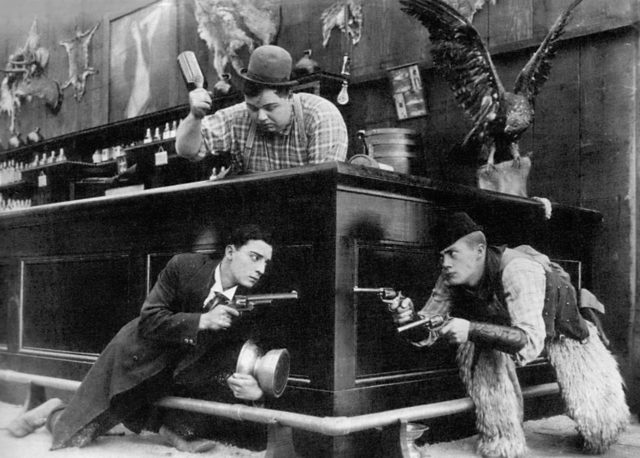
The wealth and fame apparently started to take its toll. By 1916, Arbuckle gained more weight and started drinking heavily. This caused him a lot of health issues, and amongst other problems, he developed a big infection that almost cost him his leg.
With a huge effort he managed to loose 80 lb (36 kg) and keep his leg, but in the process, he became addicted to morphine. After he had recovered from his health problems, Roscoe decided to found his own film company. He went into partnership with Joseph Schenk and called the company “Comique”. His company was very successful, making some of the best short movies during the silent era but, despite its success, in 1918 Arbuckle stepped out of the company and gave his interest to Buster Keaton instead. Meanwhile, Arbuckle made a $3 million deal with Paramount for 18 feature films that kept him busy for the next three years.
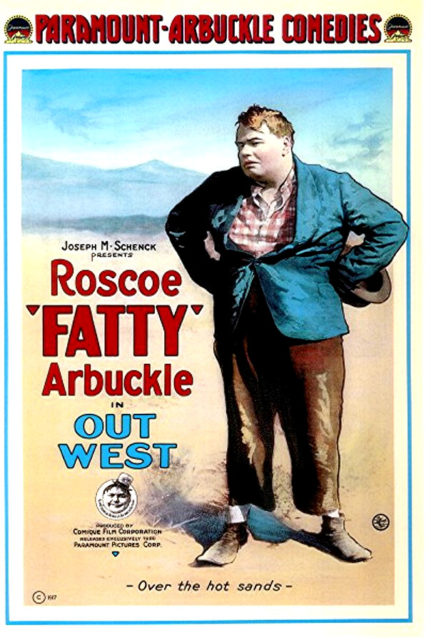
During his whole career, Roscoe was marked with an offensive nickname that he deeply disliked. Studios often chose to put Roscoe “Fatty” Arbuckle as his screen name. In the movies in which Arbuckle portrayed women, he was often written as “Miss Fatty” (as in “Miss Fatty’s Seaside Lovers“). Other nicknames that his fans used were “The Prince of Whales” and “The Balloonatic”. Arbuckle always objected to people when they called him fatty by saying, “I’ve got a name, you know”.
A terrible event happened in 1921 that threw a dark shadow over Arbuckle’s career. He was charged with rape and manslaughter. In the end, it turned out that he was wrongfully accused, but by then the damage had already been done, and his professional and private life were on the brink of destruction.
It was September 5, 1921, when after months of an exhausting shooting schedule, Arbuckle took a vacation for himself and went to San Francisco with two friends, Lowell Sherman and Fred Fishback. They checked into the St. Francis Hotel and rented one room specifically for a party. Several women were invited to the party, including the 26-year-old aspiring actress Virginia Rappe and her friend Bambina Maude Delmont. Later that night, Rappe was found lying critically ill in Roscoe’s room. The hotel doctor examined her and reported that she was probably ill because of intoxication and gave her morphine to ease her pain.
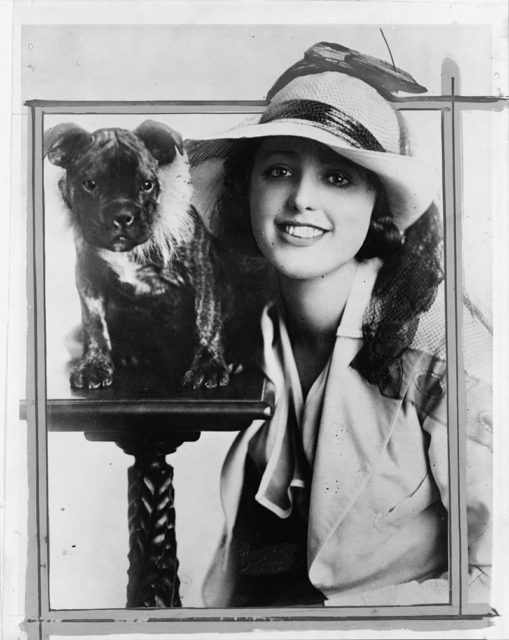
After two days, she was taken to the hospital where her friend Delmont told the doctors that Rappe had been raped by Arbuckle. She was examined and no evidence of rape was found. Rappe died of peritonitis 24 hours later, caused by a ruptured bladder. Her friend reported the case to the police and repeated her claim that Arbuckle had raped her.
The police made a report that concluded that Rappe had died due to the weight of Arbuckle while he was raping her.
Rappe’s manager also accused Arbuckle, saying that he used a piece of ice to simulate sex and that the piece had caused the injuries. It was later testified by some witness statements that Arbuckle actually rubbed a piece of ice over her stomach to ease the pain she was feeling.
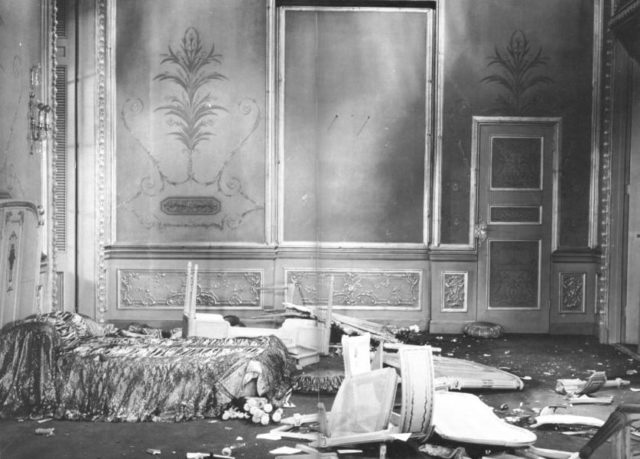
Roscoe was arrested, and he denied all of the claims made by Delmont and Rappe’s manager. His trials soon began and immediately became the focus of the international news.
Arbuckle’s trial became a huge media event and “yellow journalism” profited a lot out of it. Many newspapers made him look like a true monster and somebody who was lecherous and used his weight to overpower women. In reality, all of those who knew Arbuckle personally would say the exact opposite.
According to those around him, he was a good man with the utmost respect for women, and was described as “the most chaste man in pictures”. Charlie Chaplin, who learned a lot from Roscoe, was in England during the scandal, however, that didn’t stop him from giving interviews to reporters telling them that Arbuckle couldn’t be guilty of Rappe’s death. Chaplin said he “knew Roscoe to be a genial, easy-going type who would not harm a fly”. Buster Keaton also defended him and earned a reprimand from his studio for his statement.
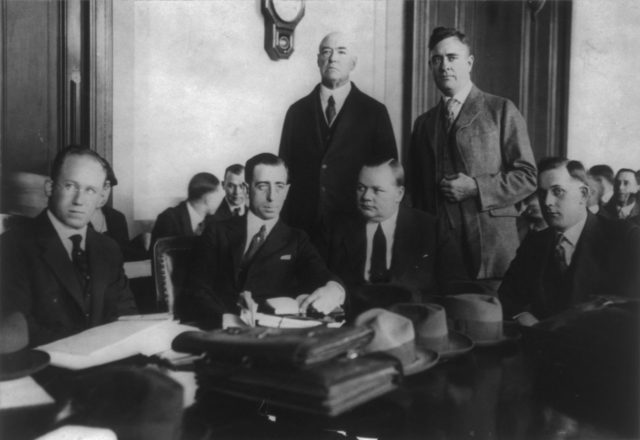
Virginia Rappe, who was known to have a “turbulent” life, struggling as an actress and drinking heavily, suffered from chronic cystitis, and it is speculated by some that her death was caused by these severe health problems. People testified that she was often intoxicated at parties and that drinking would intensely aggravate her bladder condition.
By the time Roscoe’s third and final trial was happening, his life and career were already ruined. His films were banned, and the newspapers were full of terrible stories about his and Hollywood’s immorality. The third trial took place on March 13, 1922, and Arbuckle testified again, repeating what he had said in his previous statements. On April 12, the jury assembled to make their final verdict. By that time, most of the evidence was on Roscoe’s side despite the huge propaganda campaign against him. After only six minutes, the jury returned to the courtroom and unanimously agreed that he was not guilty. After this, they read a formal apology for his ordeal and one by one they shook his hand and personally apologized. Roscoe kept the apology statement as a treasure for the rest of his life.
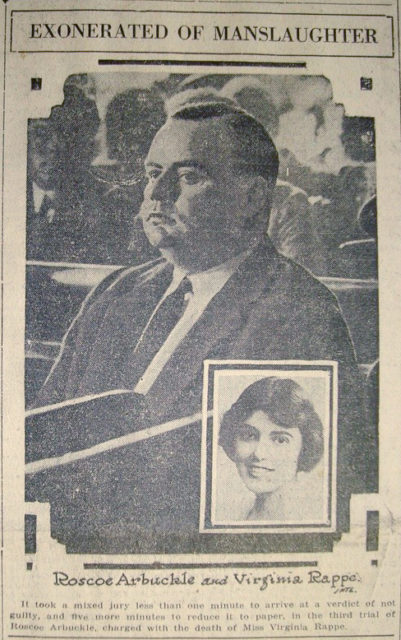
Roscoe Arbuckle’s name was legally cleared of all charges, but the whole process made a huge wound on his personality and professional life from that time on. He was left with a huge debt to lawyers, and his films were still banned. Buster Keaton tried to help him by giving him 35 percent of all future profits from his company and he also gave him roles in his films, but even that didn’t help and he started drinking again. After a while, Arbuckle was given a chance to work as a director under the alias William Goodrich (the name of his father). Although he worked on a few high profile movies during this period, none of them helped him to get his old glory back.
In 1932, things finally started to look bright for Arbuckle again. He signed a contract with Warner Bros which allowed him to star under his own name in six comedy movies. These six short movies contain the only voice recordings of Roscoe Arbuckle. It was June 28, 1933, when Roscoe finished the last of the six movies. The following day, Warner Bros offered him a new contract for a feature-length film. He was so happy about it and went to celebrate with his friends, allegedly telling them that, “This is the best day of my life”. Later that night, he suffered a heart attack and died in his sleep. Roscoe was 46 years old at the time.
Roscoe Arbuckle is a huge figure in the history of film, and his name should always be remembered.
